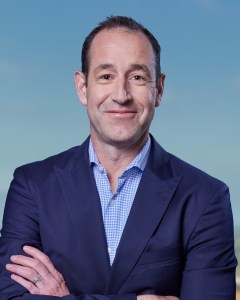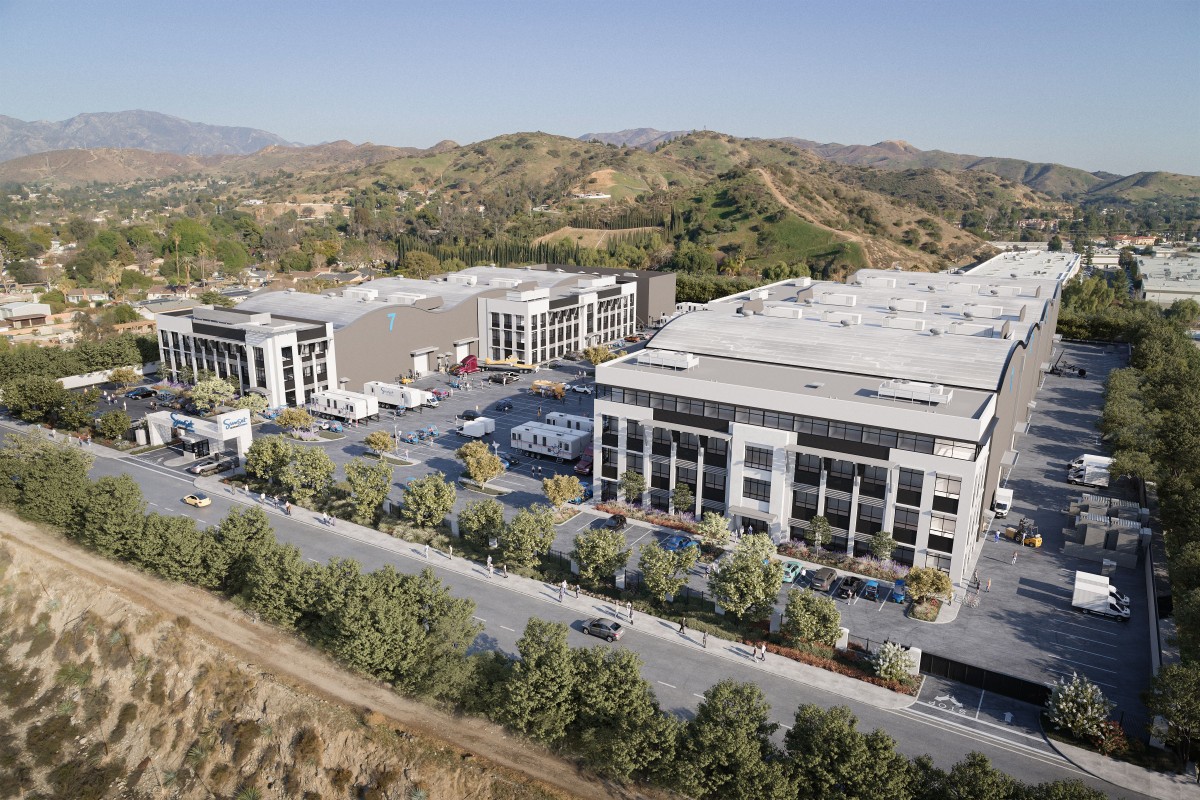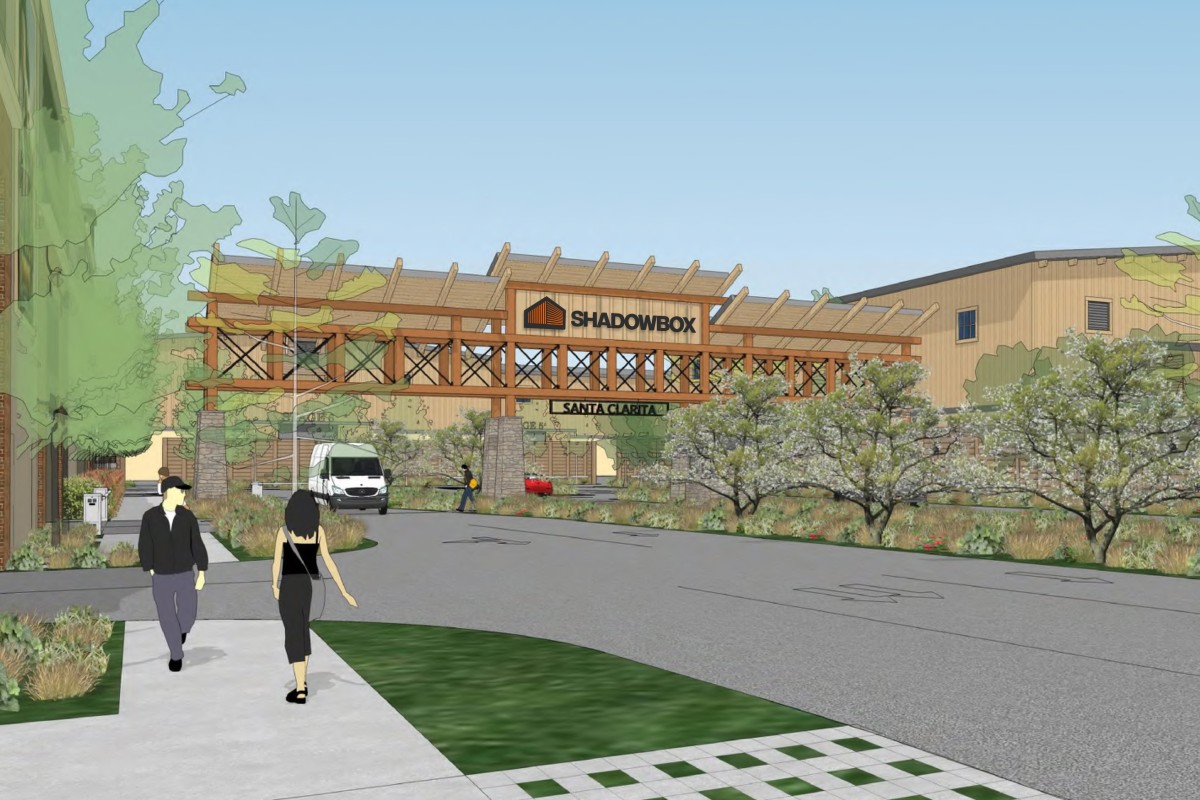Developing LA’s Next Generation of Studios
Industry leaders examine Los Angeles' new wave of studio space and the impact of unrelenting demand.

Jeff Stotland, Executive Vice President of Global Studios at Hudson Pacific Properties. Image courtesy of Hudson Pacific
It is no secret that the pandemic has accelerated our consumption of media and online entertainment, but the rise of streaming services was well on its way before 2019. As one of the main entertainment hubs on the planet, California has seen massive investment pour into the sector within the last decade, manifesting in a surge of new studio development projects. Research from University of California Riverside’s School of Business shows that California’s creative economy gained more than 70,000 jobs since 2015, while wages within the industry have grown nearly 40 percent in the same timeframe.
“Appetite for content during the pandemic coupled with delays in production in the beginning of the pandemic created significant pent-up production demand,” Jeff Stotland, executive vice president of Global Studios at Hudson Pacific Properties told Commercial Property Executive.
Development amped up across traditional entertainment hubs, with secondary markets also seeing a rise in investment and new construction. Los Angeles remains the dominant force in the industry, however. According to CBRE and FilmLA, Los Angeles has roughly 5.5 million square feet of production space, the most out of all major markets worldwide. Still, it is not enough to keep up with current demand levels.
Production space is only one piece of the puzzle. “Beyond soundstages, blockbuster productions require significant amounts of additional real estate, including warehouses, mills and offices, in addition to space for wardrobe, set decoration and storage space—and the list of needs is only set to grow as the industry continues to evolve,” Peter Rumbold, director of Shadowbox and head of real estate at Commonwealth Asset Management, told CPE.
“Global demand for content continues to surge, and with it the demand for soundstages, production offices and studio-adjacent Class A space,” Stotland added. To meet this growing need for content, new construction is starting all over the thirty-mile zone (TMZ), the radius around Hollywood’s center where film production has been historically located.

Peter Rumbold, Director of Shadowbox and Head of Real Estate at Commonwealth Asset Management. Image courtesy of Shadowbox
In previous decades, when little production space was available in the region, industrial space would act as an outlet. Production companies would lease available industrial buildings for three to twelve months to shoot, according to Craig Peters, vice chairman with CBRE Los Angeles. “Today, however, you have virtually zero available industrial inventory and, if something becomes available, that landlord will want a five- to 10-year lease commitment and will not consider short-term leases,” Peters added.
This led to the success of conversion companies that lease industrial property on a long term, outfit them as soundstages, then sublet them on a short term to production companies. Another aspect is the amount of capital looking for studio development opportunities. Today, studios are considered a core and stable tenant in Los Angeles, with billions of dollars flowing into the sector.
State-of-the-art production space
Hudson Pacific Properties is among many other developers currently expanding their soundstage footprint. Stotland told CPE that the upcoming purpose-built Sunset Glenoaks is a natural expansion of the company’s Sunset Studios, which currently totals around 3.5 million square feet—including office space and 35 stages. The Sunset Studios is jointly owned by Hudson Pacific and funds managed by Blackstone.
“Content production tenants are looking for modern, ideally located studio facilities. Some features we see in high demand include large soundstages with high clear heights, highly efficient, stage-adjacent support space, and technology infrastructure,” Stotland said.
The Sunset Glenoaks project, estimated to cost up to $190 million, will comprise seven flexible stages, located in Sun Valley. These will be fit for both film and television soundstages—each measuring between 15,000 and 21,000 square feet with 35- to 40-foot clear heights. It will feature an additional 120,000 square feet of stage-adjacent support space, which includes office, mills, parking and truck loading space. Sunset Glenoaks will be built to meet LEED certification and 100 percent carbon neutral operations. The project is slated for a 2023 completion.
Peters points out that studio development in Los Angeles is focused on two directions—purpose-built stages and industrial conversion stages. Both approaches have been impacted by the region’s minimal available land supply, with the level of demand contributing to record land prices. “Conversions have also been a big demand driver for existing industrial space, along with e-commerce and, together, have reduced industrial vacancy in the TMZ to virtually zero percent, leading to record building and land sales prices,” Peters told CPE.
Another sizeable studio development is currently underway as part of Atlanta-based Shadowbox Studios’—formerly known as Blackhall Studios—portfolio, occupying a 93-acre parcel in Santa Clarita. The company received a $500 million investment from Silver Lake this year to support its growth. Plans call for 19 soundstages comprising 1.3 million square feet of production and support space. Shadowbox’s locations also provide on-site production services, like stage crew, lights and equipment. “Our campus is being designed with modern productions in mind and will be one of the first purpose-built, fully-integrated production facilities delivered in the Los Angeles market in decades,” Rumbold added for CPE.
The project is Shadowbox’s first foray into the Los Angeles market, with the company also expanding in Atlanta—22 soundstages, 1.2 million square feet underway—and London—1 million-square-foot Shinfield Studios. Additionally, Shadowbox expects a total of $1.5 billion in investments for its worldwide growth, with the funds to be used for additional expansions in other markets, as well as adding more on-lot services such as lighting and grip rental.
“The most challenging aspect of entering the L.A. market was simply finding a site suitable for the type of development that we are targeting,” Rumbold added. “Los Angeles is a dense, urban market with very few remaining large scale undeveloped land parcels.”
Growing bigger in L.A.
Quixote Studios, one of the largest providers and operators of soundstages and production services in Los Angeles, also expanded its presence this year. Quixote operates more than 24 stages in the metro, with over 1 million square feet of production space, comprising soundstages, mills, prop and equipment storage space, along with flex office space. “We have purpose-built some and converted high bay warehouses into Class A stage space,” Quixote CEO Mikel Elliott told CPE.
The latest additions to Quixote’s footprint are an expansion to its San Fernando Valley location named Q-NOVA, which first opened in 2019 on a 10-acre parcel. The company added 75,000 square feet of studio space and 20,000 square feet of office space to this location—now spanning 20 acres and featuring a total of 10 soundstages, 60,000 square feet of office space, mills and support warehouses, along with parking. Quixote’s clients include ABC/Disney, HBO, Sony, Paramount, NBC Universal and Warner Bros.
A week ago, Hudson Pacific announced its acquisition of Quixote Studios for $360 million, before closing costs. Hudson acquired the entirety of Quixote’s portfolio—which comprises 60 stages across Los Angeles and London—as well as its production services division transportation fleet of more than 1,400 cast trailers, trucks and specialized vehicles in Los Angeles, Atlanta and Albuquerque.
Mikel Elliot will retain a leadership position at Quixote, stating that the companies’ shared purpose is to elevate the production experience for crews on their collective stages. “Together, we will further innovate, inspire and solve new production challenges in the era of streaming content and beyond,” Elliot said in prepared remarks.
With this deal, Hudson Pacific aims to complement the capabilities of its Sunset Studios, expanding the full-service offering of soundstages and production services across key global markets. “Quixote strengthens our reach to capture strong secular demand for studio and related assets, including excess demand at our Sunset Studios locations, and enables us to achieve immediate economies of scale,” Stotland added in a prepared statement.
No place like home
CBRE’s Peters told CPE that developers continue to face many challenges in the market despite the massive demand for content. As more production space is needed, rents jumped considerably, and supply shortages pushed building and land sale prices to record highs, with some submarkets seeing values more than doubling over the past two years.
The right combination of affordability, desirable location, scale of property and bogged down entitlement and permitting processes also add considerable difficulty for developers, according to Elliot.
Despite all this—topped with rising construction costs, inflation and supply chain issues—capital continues to pour into Los Angeles’ film production sector. Other projects were announced by Sylmar Studios, which is building a $500 million production facility, spanning 27 acres in the town of Sylmar, while East End Studios—part of East End Capital—announced last month it will construct an $800 million film studio in the Arts District.
Other large North American markets where significant growth is occurring include Atlanta, New Orleans, Albuquerque and Vancouver, while Europe and Asia have also seen their fair share of development booms. All these markets offer some sort of incentive to attract more investors, but, as Peters points out, “a comparative advantage that California has over other locations is many of the A-list talent in front and behind the camera resides in Southern California. Dorothy’s famous phrase of ‘there’s no place like home’ can be a deciding factor in location.”










You must be logged in to post a comment.